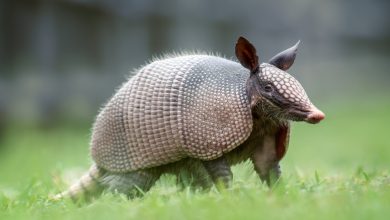
Cats have long enchanted us with their mysterious allure, graceful movements, and independent spirits. These fascinating creatures exhibit a range of behaviours and characteristics that never cease to captivate their human companions. Whether they’re playfully pouncing on a toy or curling up in a cosy spot for a nap, cats bring a unique joy and tranquillity to our lives.
Understanding your feline companion is essential for fostering a harmonious relationship. By delving into the quirks and traits that make cats so special, you can better cater to their needs and enhance their well-being.
In this article, we will unveil ten intriguing facts about cats that every cat owner should know, shedding light on some of the most remarkable aspects of these beloved pets. So, prepare to deepen your appreciation for your furry friend as we explore the fascinating world of cats.
Fact 1: Whiskers Are More Than Just Cute
Whiskers are far more than just an adorable feature of your cat’s face; they are essential sensory tools that help cats navigate and understand their environment. Each whisker is deeply embedded in the cat’s body, with nerves at its base that send vital sensory information to the brain.
This sophisticated system allows cats to detect subtle changes in their surroundings, such as the presence of nearby objects or shifts in air currents.
When moving in tight spaces or during nighttime adventures, cats rely on their whiskers almost like radar antennas, allowing them to avoid obstacles and assess whether they fit through openings.
Additionally, the placement of whiskers on a cat’s face helps them gauge the width of gaps, ensuring safe and efficient navigation. This remarkable adaptation underscores the complexity and elegance of feline anatomy and behaviour.
Fact 2: Purring Has Healing Powers
The sound of a cat’s purr is not only soothing to our ears but also holds intriguing therapeutic potential. Many cat owners can attest to the calming effect that a purring cat has during moments of stress or anxiety.
But beyond the anecdotal evidence, scientific studies suggest that a cat’s purr may have genuine healing properties.
Research has indicated that the frequency of a cat’s purr, typically between 25 and 150 Hz, can promote the healing of bones and tissues, reduce pain and swelling, and even alleviate symptoms of Dyspnoea. This frequency range is thought to stimulate cellular regeneration, contributing to faster recovery times.
Additionally, the rhythmic vibration of purring can lower stress levels by decreasing the production of cortisol, a stress-related hormone, and thereby improving overall well-being.
Thus, the humble purr embodies more than just a sign of contentment; it is a testament to the profound and subtle benefits that our feline companions can offer.
Fact 3: Cats Have Excellent Night Vision
Cats are renowned for their excellent night vision, which allows them to see in conditions that would leave humans virtually blind. This remarkable ability is primarily due to the unique structure of a cat’s eyes.
Unlike human eyes, a cat’s eyes possess a higher number of rod cells, which are responsible for detecting light and motion. This abundance of rod cells enables cats to see more clearly in low-light conditions.
Additionally, cats have a reflective layer behind their retinas called the tapetum lucidum, which enhances their vision in the dark by reflecting light that passes through the retina back into their eyes. This gives their eyes that distinctive glow when caught in headlights or other bright lights.
In comparison, human night vision pales dramatically; we rely significantly more on cone cells for daylight and colour vision, limiting our ability to perceive our surroundings in the dark. While humans can see adequately in well-lit conditions, cats excel in dim and low-light environments, highlighting their evolutionary adaptation as nocturnal hunters.
Fact 4: Cats Have Unique Nose Prints
Just as humans have distinct fingerprints, each cat possesses a unique nose print that differentiates them from one another. The patterns of ridges and bumps on a cat’s nose form a one-of-a-kind “nose print,” much like the swirls and loops that make up human fingerprints.
This distinct characteristic can be used for identification purposes, although it is not as commonly utilised as microchipping or collar tags.
Despite its limited practical applications in everyday pet identification, the uniqueness of a cat’s nose print underscores the individuality of every feline. It’s a fascinating reminder that each cat has its own unique set of traits and features, contributing to their specialness in the eyes of their owners.
Understanding and appreciating these tiny yet significant details can foster a deeper connection between cat owners and their beloved pets.
Fact 5: The Truth About Catnip
Catnip, or Nepeta cataria, is a herb from the mint family that is famously known for its captivating effect on domestic cats. The active compound in catnip, nepetalactone, binds to receptors in a cat’s nose and stimulates sensory neurons, leading to the temporary behavioural changes that many cat owners delight in witnessing.
These behaviours can include rubbing, rolling, purring, and even bouts of playful aggression. Interestingly, not all cats react to catnip; sensitivity to its effects is inherited, with approximately 50-75% of cats displaying a response.
The degree of responsiveness can vary based on factors such as age, genetic makeup, and overall health. Kittens and older cats, for example, tend to be less affected by catnip compared to adult cats in the prime of their life.
This genetic predisposition highlights the complex and individual nature of feline responses to stimuli and adds another layer to the intriguing world of cat behaviours. Understanding the varying reactions to catnip can help cat owners better cater to their pets’ preferences and provide stimulating and enjoyable environments for them.
Fact 6: Cats and Their Territory
Cats are naturally territorial creatures, and their methods of marking territory are essential to understanding their behaviour. Marking territory is not just about claiming ownership but also about communication.
Cats employ various strategies to mark their territory, such as scratching objects and scent marking. Scratching serves a dual purpose: it sharpens their claws and leaves visual marks and scent cues from glands in their paws. These visual and olfactory signals communicate to other animals that the marked area is claimed.
Similarly, cats use scent glands located on their cheeks, head, and body to mark their environment by rubbing against objects, leaving behind a distinct scent. This scent marking is a way of establishing a sense of familiarity and safety, reducing stress and helping them navigate their space with confidence.
Understanding these territorial behaviours provides insight into your cat’s needs and contributes to creating an environment where they feel secure and content.
Fact 7: Cats Can Be Lactose Intolerant
The image of a cat lapping up a bowl of milk is a classic myth perpetuated by media and literature, but in reality, many cats are lactose intolerant, making milk a poor dietary choice for them. While kittens consume milk from their mothers, they produce an enzyme called lactase that helps digest lactose.
However, as cats mature, their production of lactase decreases significantly, rendering them unable to properly digest the lactose found in cow’s milk. Feeding milk to adult cats can lead to various health issues such as stomach upset, diarrhea, and dehydration.
These adverse effects are due to the undigested lactose fermenting in the colon, which can cause gastrointestinal discomfort. For cat owners, it’s essential to recognize that water should be the primary liquid given to adult cats, and any nutritional needs should be met with cat-specific foods and treats.
Thus, while the notion of cats enjoying milk may be endearing, it is far from beneficial to their health and well-being.
Fact 8: The Sound of a Cat’s Meow
Cats use their unique vocalizations to communicate with humans in ways that can be surprisingly complex and varied. Unlike their wild counterparts, domestic cats have developed the meow largely as a tool for interacting with people, using different pitches, durations, and intensities to convey a range of messages.
For example, a cat may employ a short, high-pitched meow to greet their owner, while a longer, more insistent meow may signal hunger or discomfort. It’s fascinating to note that the frequency and tone of a cat’s meows can vary significantly among different breeds.
Siamese cats, for instance, are known for their loud and persistent vocalizations, often described as “yowling,” which they use to demand attention more assertively than other breeds.
In contrast, Persian cats are typically quieter and communicate with softer, more infrequent meows. Understanding these vocal nuances helps pet owners better interpret and respond to their feline companions’ needs, fostering a deeper bond and more effective communication.
Fact 9: Cats Groom Themselves
Grooming is a fundamental activity in a cat’s daily routine, serving multiple purposes beyond mere cleanliness. Cats spend a considerable amount of time grooming themselves, using their rough tongues to remove loose fur and dirt from their coats.
This self-grooming behaviour plays a crucial role in maintaining their overall health; it helps prevent matting, reduces the risk of skin infections, and even regulates their body temperature by promoting proper insulation.
Moreover, grooming has significant social implications within cat colonies. When cats groom each other, it serves as a form of social bonding, reinforcing relationships and establishing a sense of community. Even solitary grooming can have calming effects, helping cats relieve stress and anxiety.
Understanding the importance of grooming in a cat’s life highlights the multifaceted benefits it brings, from enhancing physical well-being to fostering social connections and emotional stability.
Fact 10: Cats Have a Strong Homing Instinct
Cats are renowned for their impressive homing instincts, having astounded researchers and pet owners alike for centuries. Historical accounts abound with tales of cats traveling great distances to reunite with their owners, often crossing treacherous terrain and overcoming numerous obstacles.
A famous example includes the account of “Sugar,” a cat who reportedly journeyed over 200 miles to find her family after being accidentally left behind during a move.
Scientific studies have sought to unravel the mystery behind this remarkable ability, exploring various hypotheses such as magnetic fields, keen sensory perception, and even a sophisticated internal compass.
Some researchers suggest that cats may be able to sense the Earth’s magnetic fields, aiding their navigation in a manner similar to migratory birds.
Additionally, their acute sense of smell and exceptional spatial awareness likely play crucial roles in helping them track and orient themselves. This intrinsic navigational prowess underscores the resilience and adaptability of felines, cementing their place as one of nature’s most remarkable creatures.
Conclusion
In summary, cats are truly fascinating creatures with a plethora of unique traits that make them extraordinary companions. Throughout this blog, we’ve explored various fun facts about our feline friends, from their territorial behaviors and lactose intolerance to their complex vocalizations and impressive grooming habits.
We’ve also marveled at their strong homing instincts and dissected the myths surrounding their diet. Each of these characteristics not only highlights the complexity of cats but also underscores the importance of understanding and appreciating their natural behaviors.
As cat owners, taking the time to observe and comprehend these feline traits can lead to a more fulfilling and harmonious relationship with your pet. By recognizing behaviors like scent marking, respecting their dietary needs, and paying close attention to their vocalizations, you can better cater to their well-being.
Grooming, both self and social, should be encouraged to maintain their health and reduce stress. Finally, acknowledging their homing ability reminds us of their impressive resilience and adaptability.
So, next time you find your cat engaging in any of these behaviors, take a moment to appreciate the intricacies that make them so unique. Observing and understanding these traits not only contributes to their happiness but also enhances the bond between you and your furry companion. Happy cat ownership!




